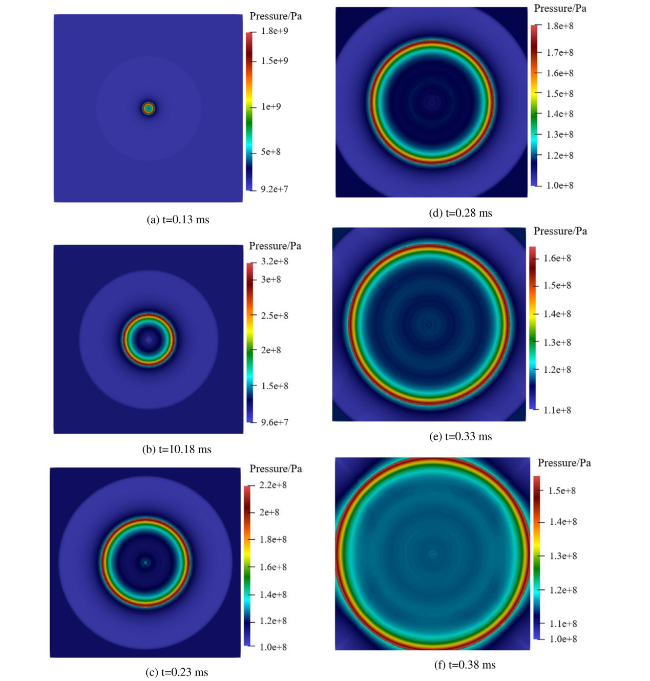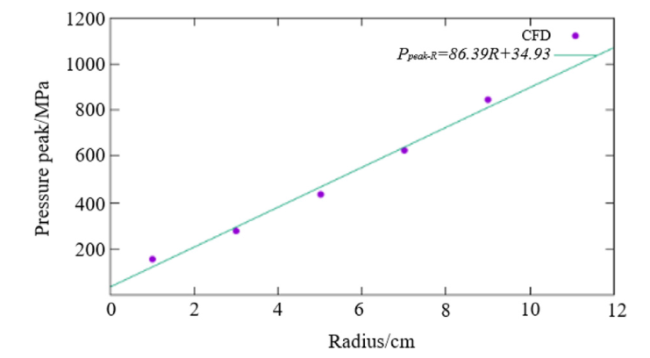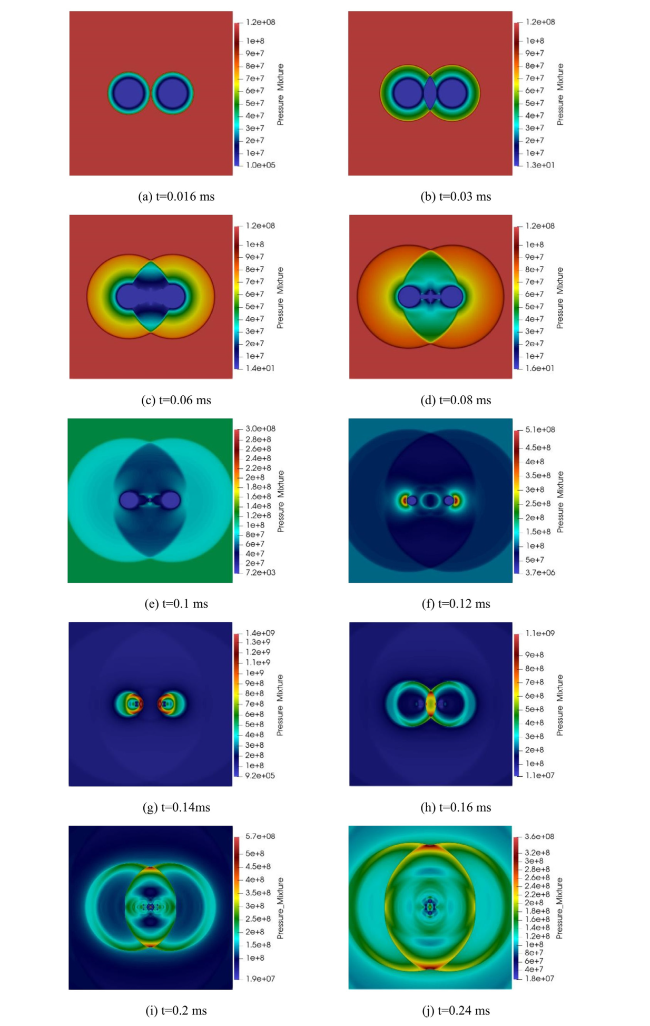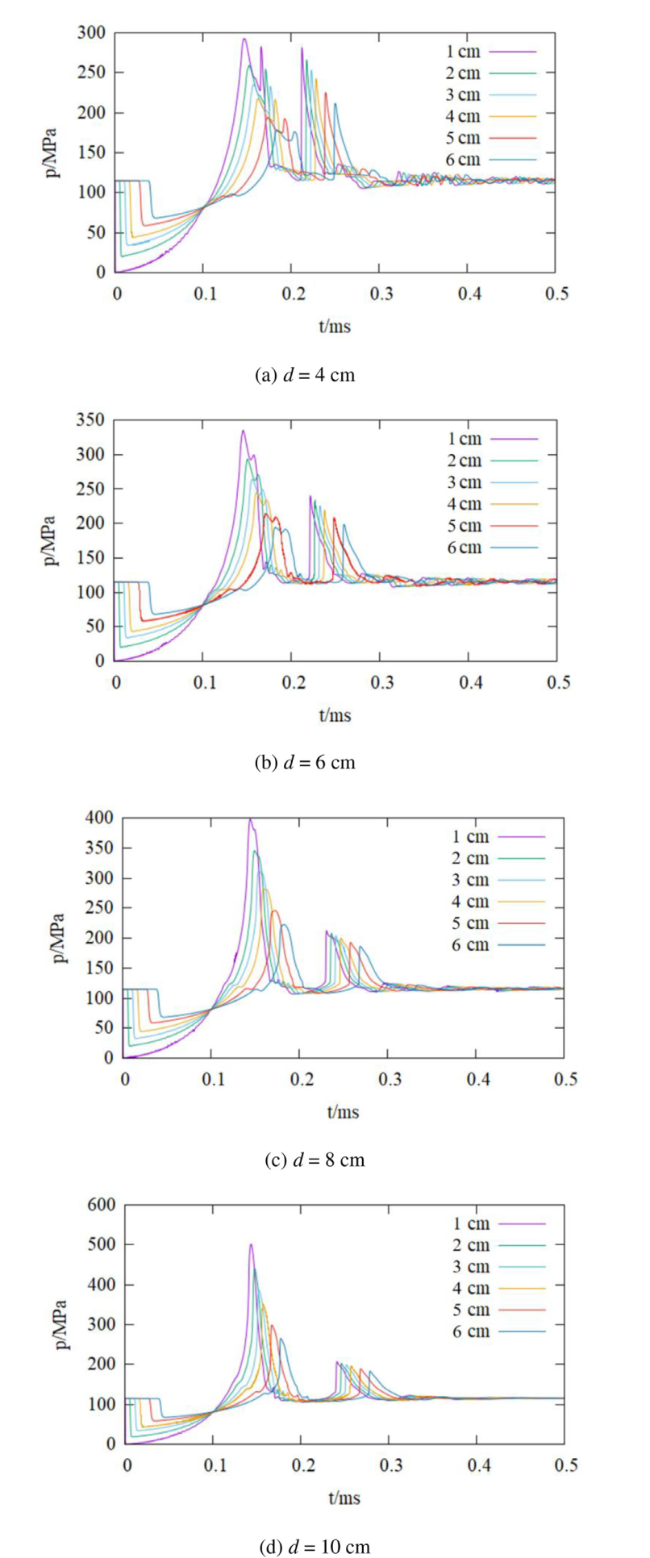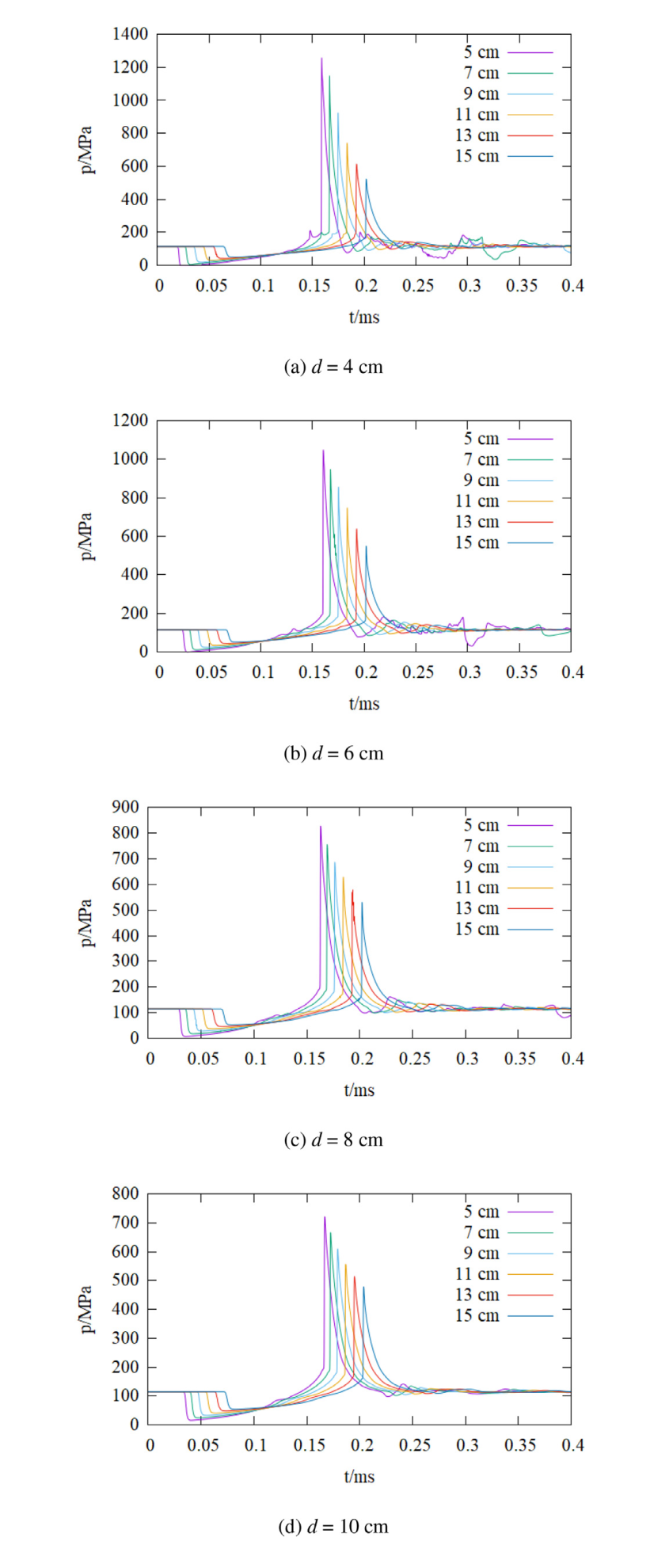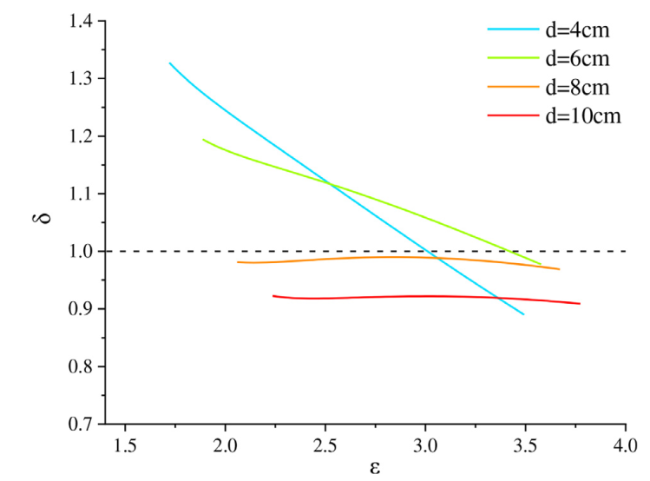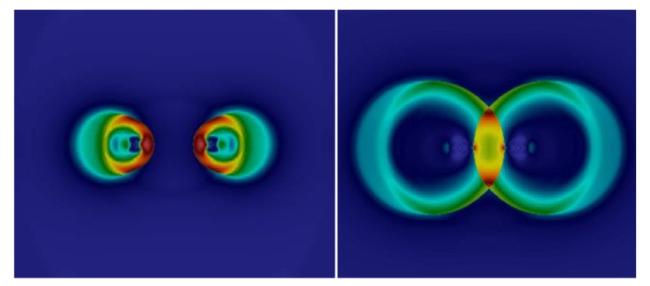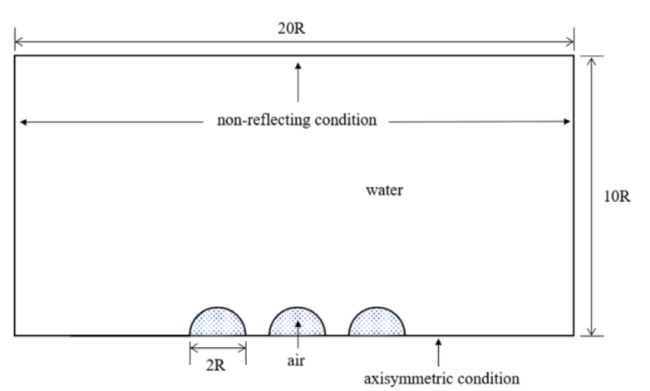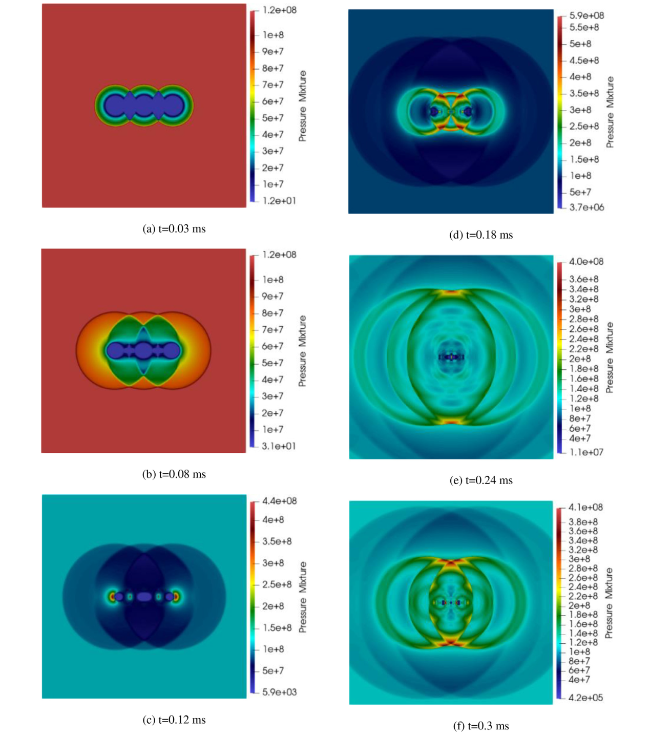1. Introduction
Fig. 1. Photographs of the “Nereus” vehicle (left) and its hollow ceramic pressure hulls (right) [2]. |
2. Numerical method
2.1. The calculation assumptions and the model simplification
Table 1. The parameters of hollow ceramic pressure hull. |
| Slurry composition | 99.9% Al2O3 |  |
| Weight | 140 ± 1 g | |
| Average tdickness | 0.058 inches | |
| Outside diameter | 3.60 ± 0.05 inches | |
| Diameter variation on each sphere | ± 0.03 inches max |
Fig. 2. The schematic diagram of implosion process. |
Fig. 3. Ceramic sphere and its powder after implosion. |
2.2. Kapila five-equation model for compressible multiphase flow
2.3. Equation of state
2.4. Setting of the numerical simulation
Fig. 4. Schematic of implosion of single spherical pressure hull. |
Fig. 5. Adaptive Cartesian grids. |
3. Verification of the method
3.1. Verification of the 6.996 MPa calculation
3.1.1. Grid convergence
Table 2. The pressure peak at the monitoring point and the air cavity collapse time at 6.996 MPa. |
| Background grids | Pressure peak at monitoring point (MPa) | Air cavity collapse time (ms) |
|---|---|---|
| 200 × 200 | 40.6 | 0.421 |
| 400 × 400 | 41.0 | 0.418 |
| 800 × 800 | 41.1 | 0.417 |
3.1.2. Verification of pressure shock wave results
Fig. 6. The schematic diagram of Turner's experiment. |
Fig. 7. Pressure at 10.16 cm from the center of the sphere under 6.996 MPa. |
Table 3. The pressure peak of the shock wave at 10.16 cm from the center of the sphere under 6.996 MPa. |
| Source | The pressure peak of the shock wave (MPa) |
|---|---|
| Tuner's experiment | 25.3, 27.0, 31.1 |
| Tuner's simulation of DYSMAS | 38.4 |
| The simulation of present research | 41.0 |
3.1.3. Verification of radius evolution of the air cavity at 6.996 MPa
Fig. 8. Radius evolution at 6.996 MPa. |
3.2. Verification of the 115 MPa calculation
3.2.1. Grid convergence
Fig. 9. Pressure peak at the monitoring point and the air cavity collapse time at 115 MPa in different grids. |
Table 4. The pressure peak at the monitoring point and the air cavity collapse time at 115 MPa. |
| Background grids | Pressure peak at monitoring point (MPa) | Air cavity collapse time (ms) |
|---|---|---|
| 50 × 50 | 403 | 0.158 |
| 100 × 100 | 416 | 0.143 |
| 200 × 200 | 427 | 0.131 |
| 400 × 400 | 434 | 0.123 |
| 800 × 800 | 438 | 0.122 |
| R | 0.571 | 0.125 |
3.2.2. Verification of radius evolution of the air cavity at 115 MPa
Fig. 10. Radius evolution at 115 MPa. |
3.2.3. Verification with fluid structure coupled method
Fig. 11. Calculation domain and mesh diagram of the CEL method. |
Fig. 12. Extrusion equilibrium force acting on both sides of the sphere along the Z direction. |
Fig. 13. Comparison of pressure between the compressible multiphase flow method and CEL method. |
4. Results
4.1. The results of implosion of single sphere at 115 MPa
4.1.1. Analysis of pressure shock wave results
Fig. 14. Pressures at different points at 115 MPA. |
Fig. 15. Relationship between peak pressure and position. |
Fig. 16. Pressure cloud of shock wave at 115 MPa. |
Fig. 17. Speed of shock wave with distance. |
4.1.2. Analysis of implosion pressure with different radii
Fig. 18. Peak pressure 10 cm from the spherical center for different radii. |
4.2. The results of the implosion of two spheres at 115 MPa
4.2.1. Setting of the implosion of two spheres at 115 MPa
Fig. 19. Schematic of implosion of two spheres. |
4.2.2. Analysis of pressure shock wave results
Fig. 20. Pressure cloud of implosion when two spheres are 6 cm apart (Pressure/Pa). |
4.2.3. Analysis of implosion pressure with different spacing
Fig. 21. The position of the monitoring points. |
Fig. 22. Pressure curve of the left monitoring points with different sphere spacing. |
Table 5. The first peak pressure at the monitoring point 5 cm from the surface of the left sphere. |
| The spacing between the two spheres/cm | The first peak pressure/MPa |
|---|---|
| 4 | 194 |
| 6 | 214 |
| 8 | 246 |
| 10 | 299 |
| The pressure peak of the implosion of a single sphere | 434 |
Fig. 23. The pressure of the monitoring points in the vertical direction of the center of the two spheres with different sphere spacing. |
Fig. 24. Location of monitoring points. |
Fig. 25. Superposition effect. |
Fig. 26. The curves of δ and ε for different spacing between two spheres. |
Fig. 27. The high pressure area of the shock wave converges between the two spheres. |
4.3. The results of implosion of three spheres under 115 MPa
Fig. 28. Schematic of implosion of three spheres. |
Fig. 29. Pressure cloud of implosion of three spheres at different times (Pressure/Pa). |

















